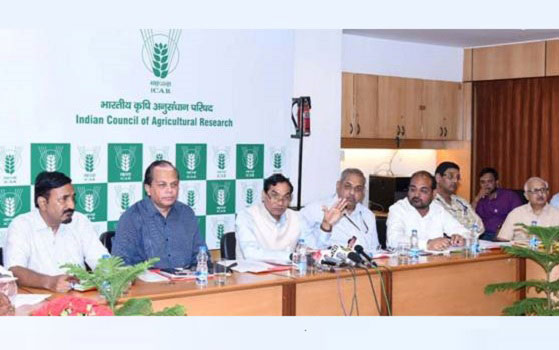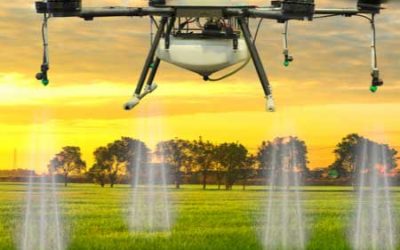Highlighting the considerable reduction in crop residue burning incidents in 2018, Dr. Trilochan Mohapatra, Secretary, Department of Agricultural Research & Education (DARE) & Director General, ICAR has said that India has demonstrated through coordinated public and private efforts such challenges can be addressed effectively. While addressing media in New Delhi today, Dr. Mohapatra added that through the various efforts under the Central Sector Scheme on ‘Promotion of Agricultural Mechanization for In-Situ Management of Crop Residue in the State of Punjab, Haryana, Uttar Pradesh & NCT of Delhi’ the paddy residue burning events have reduced by 15% and 41% in 2018 as compared to that in 2017 and 2016, respectively, in all these states as per the satellite data. The Secretary also added that more than 4,500 villages in Punjab and Haryana were declared as Zero Stubble Burning Villages during 2018 as not a single crop burning incident was reported from these villages during the year.
Dr. Mohapatra stated that the Central Sector Scheme was launched with a total outgo of Rs 1,151.80 crore for the period from 2018–19 to 2019–20 by the Government of India to tackle air pollution and to subsidize machinery required for in-situ management of crop residue in the states of Punjab, Haryana, Uttar Pradesh, and NCT of Delhi. Within one year of its implementation utilizing an amount of Rs 500 crore, the happy seeder/zero tillage technology was adopted in 8 lakh hectares of land in the north- western states of India. Under the scheme, financial assistance amounting to 50% of the cost is provided to the farmers for purchase of in-situ crop residue management machines on individual ownership basis. The financial assistance for establishment of Custom Hiring Centres of in-situ crop residue management machinery is 80% of the project cost.
During 2018–19, the funds amounting to Rs 269.38 crore, Rs 137.84 crore and Rs 148.60 crore have been released to the Governments of Punjab, Haryana and Uttar Pradesh respectively, for distribution of in-situ crop residue management machinery to the farmers on subsidy, establishment of Custom Hiring Centres (CHCs) of in-situ crop residue management machinery and undertaking Information, and Education and Communication (IEC) activities for creating awareness among farmers. During 2019–20, funds amounting to Rs 273.80 crore, Rs 192.06 crore and Rs 105.29 crore have also been released so far to the Governments of Punjab, Haryana and Uttar Pradesh, respectively, said a PIB release.
ICAR is implementing the scheme through 60 Krishi Vigyan Kendras (KVKs) of Punjab (22), Haryana (14), Delhi (1) and UP (23). In this scheme, awareness campaigns were conducted by organizing thousands of demonstrations, putting up hoardings, banners and wall paintings all across the states. Almost 700 awareness programs at village levels, 200 Kisan Ghostis and Field days, 86 KPisan Melas and 250 schools and colleges were sensitized in collaboration with state departments and agricultural universities. More than 2 lakh stakeholders were sensitized during one year. More than 400 hands-on training were organized and 18,000 farmers, tractor owner and machine operators were trained, the release added.
In addition to the above Scheme, separate funds are being allocated to the states for crop residue management under Sub-Mission on Agriculture Mechanization by the Department of Agriculture Cooperation and Farmers Welfare. The state governments have also been directed that Rs 4,000 per hectare shall be used from the funds available for demonstration of machines under the Sub-Mission on Agricultural Mechanization for demonstration of straw management machinery at farmers’ fields, Ministry of Agriculture & Farmers Welfare said.














0 Comments